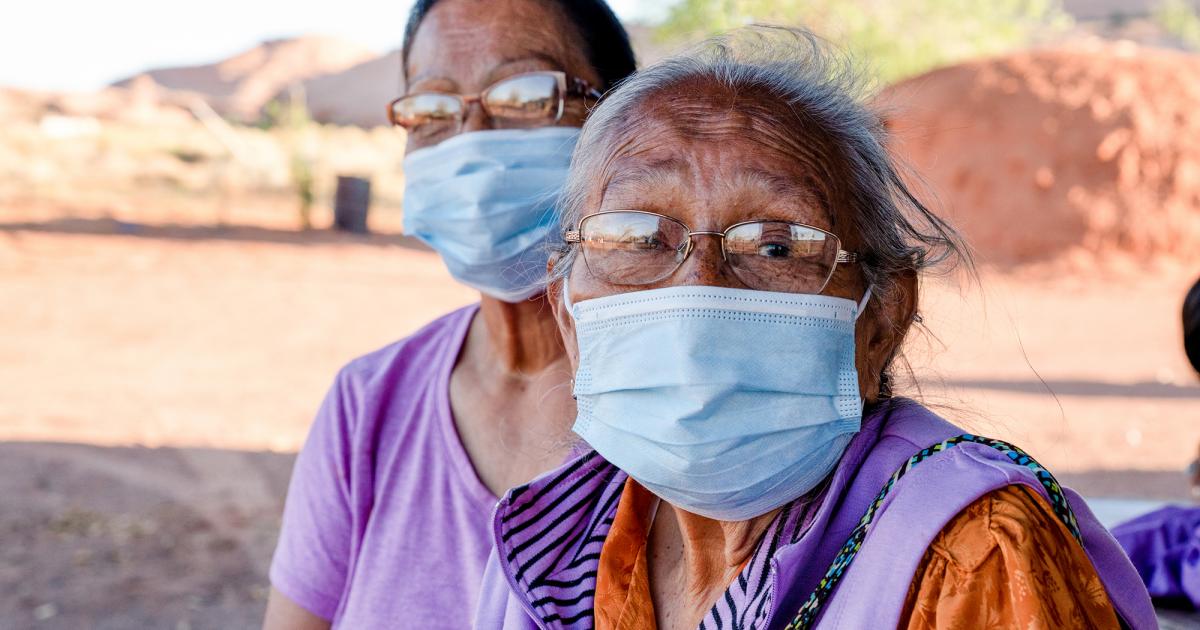This article originally appeared on Generations, American Society on Aging.
Editor’s Note: This article represents the second in a series by the Diverse Elders Coalition (DEC) to be published in Generations Today. Articles are connected to ASA-hosted webinars; see end of article to register. The series of articles by the DEC highlights research from The Caregiving Initiative, a multiyear research project funded by The John A. Hartford Foundation.
As is now well-known, the COVID-19 pandemic has had a disproportionate impact on communities of color. For American Indian and Alaska Native (AI/AN) communities, the virus has proven to be extremely deadly for people living in both rural and urban settings. Additionally, COVID-19 rates may be higher in this group due to persistent health disparities such as diabetes, obesity and heart disease among AI/AN populations.
Perhaps counterintuitively, cultural traditions, beliefs and practices among AI/AN caregivers also can be contributing factors in high rates of COVID-19 infections, hospitalizations and deaths in different tribal communities. Many of the factors affecting AI/AN caregivers and their older loved ones were identified pre-pandemic in Diverse Elders Coalition research, The Caregiving Initiative.
Cultural Impacts of Caregiving
More than 46 percent of AI/AN caregivers live with their older adult loved ones and more than half agree that their cultural belief system is one reason they provide this care. “[I] felt it was [my] turn to take care of [my] parents and grandparents after being raised by them,” said one AI/AN caregiver.
At the same time, almost two in four AI/AN caregivers reported being the only person to provide care, leaving them with little to no support, and they are likely to pay more for health-related expenses than would other caregivers from diverse populations. This lack of support is exacerbated by a distrust of the U.S. government (due to a history of poverty, displacement and discrimination), which leaves AI/AN caregivers less likely to use formal support services and more likely to rely upon family and tribal community members instead.
The Need for Accessible, Affordable Healthcare Services
Half of surveyed caregivers reported using only one supportive service. Without intervention, the lack of support will have a cumulative negative outcome for AI/AN caregivers, and ultimately for their loved ones. More than 40 percent of AI/AN caregivers reported having some or a great deal of difficulty with healthcare tasks, demonstrating a need for accessible, affordable healthcare services.
‘LONG-DISTANCE CAREGIVERS MAY HAVE GREATER DIFFICULTIES CONNECTING WITH OLDER LOVED ONES WHO MAY LACK THE NECESSARY TECHNOLOGY AND EXPERTISE.’
Although more research is needed to reveal the cause(s) of low service use among AI/AN caregivers, it is clear that medical intervention is necessary to alleviate the high rates of isolation (17.4 percent) and health strain (23.3 percent) among AI/AN caregivers and their older adult loved ones. Our survey examined results from rural and urban caregivers, which showed that factors beyond geographic isolation (such as cultural beliefs) were in play.
Implications on COVID-19
All of the aforementioned needs, issues and disparities faced by AI/AN caregivers and their older loved ones have been exacerbated during the COVID-19 pandemic. Health disparities that exist in tribal communities such as diabetes and obesity have been shown to worsen COVID-19 outcomes, leading to hospitalizations and ultimately death.
American Indians and Alaska Natives are three times more likely to contract COVID-19 and more than five times as likely to be hospitalized because of it compared to non-Hispanic whites. Low service use among AI/AN caregivers may be even more difficult to access for those who live on reservations and travel long distances for care.
Similarly, long-distance caregivers may have greater difficulties connecting with older loved ones who may lack the necessary technology and expertise to connect virtually, increasing caregiver burden. During the pandemic, these issues emphasize the importance of ensuring that informal and formal support networks are accessible to help alleviate caregiver physical and mental health strain. The systemic neglect of AI/AN caregiver needs reaffirms the distrust in U.S. institutions seen in tribal communities.
Best Practices to Support AI and AN Caregivers
Persistent health disparities have worsened COVID-19 outcomes for tribal populations, but have not prevented AI/AN caregivers from doing their best to protect their older loved ones. Aside from developing new interventions, service providers must collaborate with tribal communities to effectively assist AI/AN caregivers.
Below are some best practices outlined in our cultural competency training curriculum that may help service providers to better serve caregivers.
- Develop culturally and linguistically competent material for caregiving training, disease information and intervention outreach for dissemination;
- Consult with local tribal leaders, elders and local institutions in tribal communities in disseminating print material and to develop or increase capacity training; and
- Collaborate with Community Health Representatives through the Indian Health Service to disseminate resources and information.
A history of distrust in U.S. institutions has led tribal communities across the country to take preventive measures into their own hands during the pandemic. However, the need to help our tribal communities has never been greater. We must acknowledge and listen to tribal communities to resolve the needs of American Indian and Alaska Native caregivers.
Rebecca Owl Morgan is project coordinator and Kayla Sawyer is a technical communications specialist, both with the National Indian Council on Aging in Albuquerque, New Mexico. Ocean Le, MS, is a program coordinator at the Diverse Elders Coalition in New York City.
The opinions expressed in this article are those of the author and do not necessarily reflect those of the Diverse Elders Coalition.


